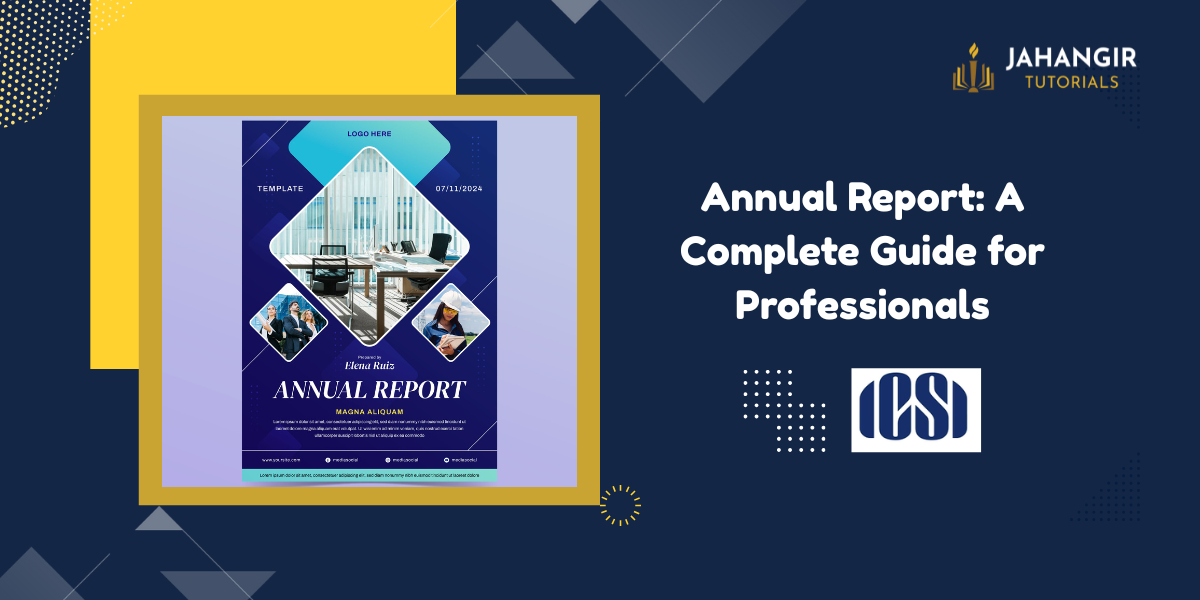An Annual Report is one of the most important statutory and financial documents of a company. It provides shareholders, regulators, and stakeholders with a clear picture of the company’s financial health, governance practices, compliance status, and future outlook.
For professionals in law, finance, and compliance, mastering the preparation and analysis of an Annual Report is crucial. It not only ensures corporate governance and regulatory adherence but also supports strategic decision-making and stakeholder communication.
Why Annual Reports Matter
An Annual Report is more than just a financial statement—it reflects a company’s transparency, performance, and reputation.
Key reasons why Annual Reports are important:
- Regulatory Compliance – Ensures adherence to the Companies Act, 2013, SEBI LODR, and other applicable laws.
- Investor Confidence – Transparent disclosures build trust among shareholders and potential investors.
- Strategic Planning – Assists management in making informed decisions by analyzing past performance.
- Benchmarking – Comparison with competitor reports helps companies evaluate industry standards.
Step 1: Review the Previous Year’s Annual Report
The first step in drafting a new report is to study the previous year’s Annual Report. It provides continuity and consistency in disclosures such as:
- Board composition
- Auditor’s remarks
- Director’s report
- CSR activities
- Risk management
This approach demonstrates how information flows from one year to another, ensuring accuracy and consistency.
Step 2: Study Competitor Annual Reports
To draft an effective report, benchmarking with similar companies’ reports is essential. For example, a listed manufacturing company should review 3–4 peer reports.
This provides insights into:
- Disclosure trends (What peers emphasize in compliance and governance)
- Design and presentation (Charts, infographics, and modern layouts)
- Compliance practices (How amendments are integrated)
Such analysis strengthens professional judgment and enhances the ability to interpret disclosures in line with industry best practices.
Step 3: Check Amendments under Companies Act & SEBI LODR
An Annual Report must reflect the latest legal amendments. Examples include:
- Companies Act, 2013 – CSR expenditure, related party transactions, board evaluations, Director’s Responsibility Statement.
- SEBI LODR Regulations – Corporate governance reporting, management discussion and analysis, and disclosures on key managerial remuneration.
Professionals must cross-check every update before finalizing the report, as missing a disclosure can lead to penalties or reputational damage.
Contents of an Annual Report
A standard Annual Report usually contains the following sections:
- Company Information – Registered office, CIN, corporate structure.
- Board of Directors’ Report – Overview of company’s operations, CSR activities, material changes.
- Director’s Responsibility Statement – A declaration of compliance and accountability.
- Corporate Governance Report – Board composition, committees, and governance practices.
- Management Discussion and Analysis (MD&A) – Industry trends, performance review, risks, and future outlook.
- Financial Statements –
- Balance Sheet
- Statement of Profit & Loss
- Cash Flow Statement
- Notes to Accounts
- Auditor’s Report – Independent auditor’s opinion on financial statements.
- CSR Report – Details of corporate social responsibility activities.
- Shareholder Information – Dividend details, shareholding pattern, listing compliance.
Who Signs an Annual Report?
Under the Companies Act, 2013, the Annual Report (including the Board’s Report) must be signed by:
- The Chairperson of the company (if authorized), or
- At least two directors, one of whom must be the Managing Director, or
- If there is only one director, then that director alone.
Additionally:
- Financial Statements must be signed by the Chairperson, Managing Director, CEO, CFO, and Company Secretary (if appointed).
- The Auditor’s Report must be signed by the Statutory Auditor.
This ensures accountability from both the management and independent auditors.
Common Mistakes in Preparing Annual Reports
- Copying the previous year’s report without updating.
- Ignoring new amendments.
- Poor presentation with missing visuals.
- Incomplete disclosures in the Director’s Report.
- Mismatches between financial statements and notes.
Avoiding these errors demonstrates professionalism and regulatory awareness.
Conclusion
The Annual Report is a vital compliance and governance tool for companies. By reviewing past reports, benchmarking against peers, and ensuring alignment with amendments, one can prepare a report that is regulatory-compliant, transparent, and investor-friendly.
Mastering the art of preparing and analyzing Annual Reports enhances corporate credibility and strengthens trust among stakeholders, while also supporting long-term growth and sustainability. Get in Touch now!
Follow us on Facebook, Instagram and YouTube to stay updated.

